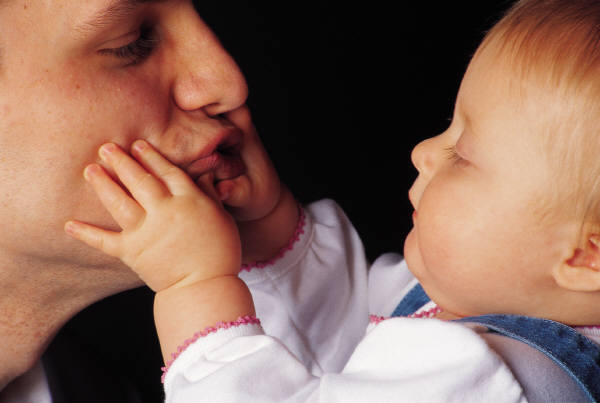Facing an Unplanned Pregnancy
When faced with an unplanned pregnancy, couples often have two immediate choices. They can choose to continue the pregnancy, or not. Not all women have this option for several reasons. For some, abortion isn’t an alternative they are willing to consider for various reasons, including religion, medical, ethical and person beliefs. For others, making the choice to have an abortion isn’t an option because they are unable or unwilling to recognize that they are pregnant.
 We encourage you to stop, take a deep breath and think about the options that are available to you. Often, couples facing an unplanned pregnancy will feel rushed to make a decision that they haven’t been given time to explore. Take time to investigate all of your options. You may decide that continuing your pregnancy is in the best interest of you and your unborn child and if that’s the case, it then creates a number of additional options available to you and your child, when he or she is born.
We encourage you to stop, take a deep breath and think about the options that are available to you. Often, couples facing an unplanned pregnancy will feel rushed to make a decision that they haven’t been given time to explore. Take time to investigate all of your options. You may decide that continuing your pregnancy is in the best interest of you and your unborn child and if that’s the case, it then creates a number of additional options available to you and your child, when he or she is born.
Make and informed and responsible decision by educating yourself about the options you have available to you and your unborn child. If you need help exploring your options, there are resources available at no cost to you.
A crisis pregnancy center can be a good place to turn if a woman suspects that she may be pregnant and is not sure what to do next. Pregnancy tests and many other valuable resources are available at these facilities. In general, a crisis pregnancy center will be faith based in nature and in the business of offering abortion alternatives. While they will provide information about abortions, they will not act as advocates for this procedure. Their role is to make sure that a woman fully understands the ramifications of aborting a child and to offer help and counsel that will help the woman choose not to terminate the pregnancy. These centers make no apologies regarding their stance on this controversial issue and they will never advise a woman to abort her child.
 Consider this: There are 200,000 couples who desperately DO want your baby! And each year there are only 25,000 babies to adopt. Why not make this unfortunate occurrence a win, win, win?  (source: National Council on Adoption)
Consider this: There are 200,000 couples who desperately DO want your baby! And each year there are only 25,000 babies to adopt. Why not make this unfortunate occurrence a win, win, win?  (source: National Council on Adoption)
By choosing adoption:
- The baby wins (by living — the same right that you have today)
- You win (knowing you did the right thing)
- A loving couple wins (fulfilling their dream of raising a child)
Place your baby for adoption means to place physically into or within another person’s grasp; to present as a gift; to donate; to offer; to exchange or trade.  When a women chooses to make an adoption plan for her child she is not giving that child as a gift, nor is she donating him/her. She is placing her children in the arms and hearts of another. She is not giving away anything, but gaining everything.
There are many different ways to make an adoption plan for your baby.
Open Adoption:  So what is an open adoption? The primary difference between a truly open adoption and a semi-open adoption is that the adopted child has the potential of developing a one-on-one relationship with his or her birth family. It is not about the adoptive parents bestowing birthparents with the privilege of contact, nor is it about birthparents merely being available to provide information over the years. Direct contact, in the form of letters, phone calls and visits between the birth family and the adopted child, along with his adoptive family, is essential if they are to establish their own relationship. After all, how can we honestly call an adoption open if the child is not involved?
Closed Adoption: In closed adoption the birth mother might see the baby for an hour or two and then sign the adoption papers. A closed adoption means that you sign the papers releasing your baby without knowing the identity of the new family. The birth parents, however, can usually write a letter to their baby.
 Independent Adoption: This means going through a private organization, doctor, or lawyer instead of an adoption agency. The birth parents present the child directly to the adoptive parents instead of an adoption agency.
Independent Adoption: This means going through a private organization, doctor, or lawyer instead of an adoption agency. The birth parents present the child directly to the adoptive parents instead of an adoption agency.
Semi-Open:Â This means that you can make an adoption plan for your baby by going through an agency, or a lawyer. Non-identifying information is exchanged among the birth parents and the pre-adoptive couple. The adoptive couple and birth parents can agree whether or not both parties are willing to continue communicating after the child has been placed. Ongoing contact is normally done through the intermediary of the adoption agency, the attorney who assisted in the placement, or through a private mediator (this could include a family member or a friend).
Rights of the Baby’s Birth Father:Â The baby’s father must give permission for adoption. He could sign a statement denying paternity, sign away his rights to the child, or give permission for the child to be adopted. If the father cannot be found, abandonment proceedings may be carried out.
